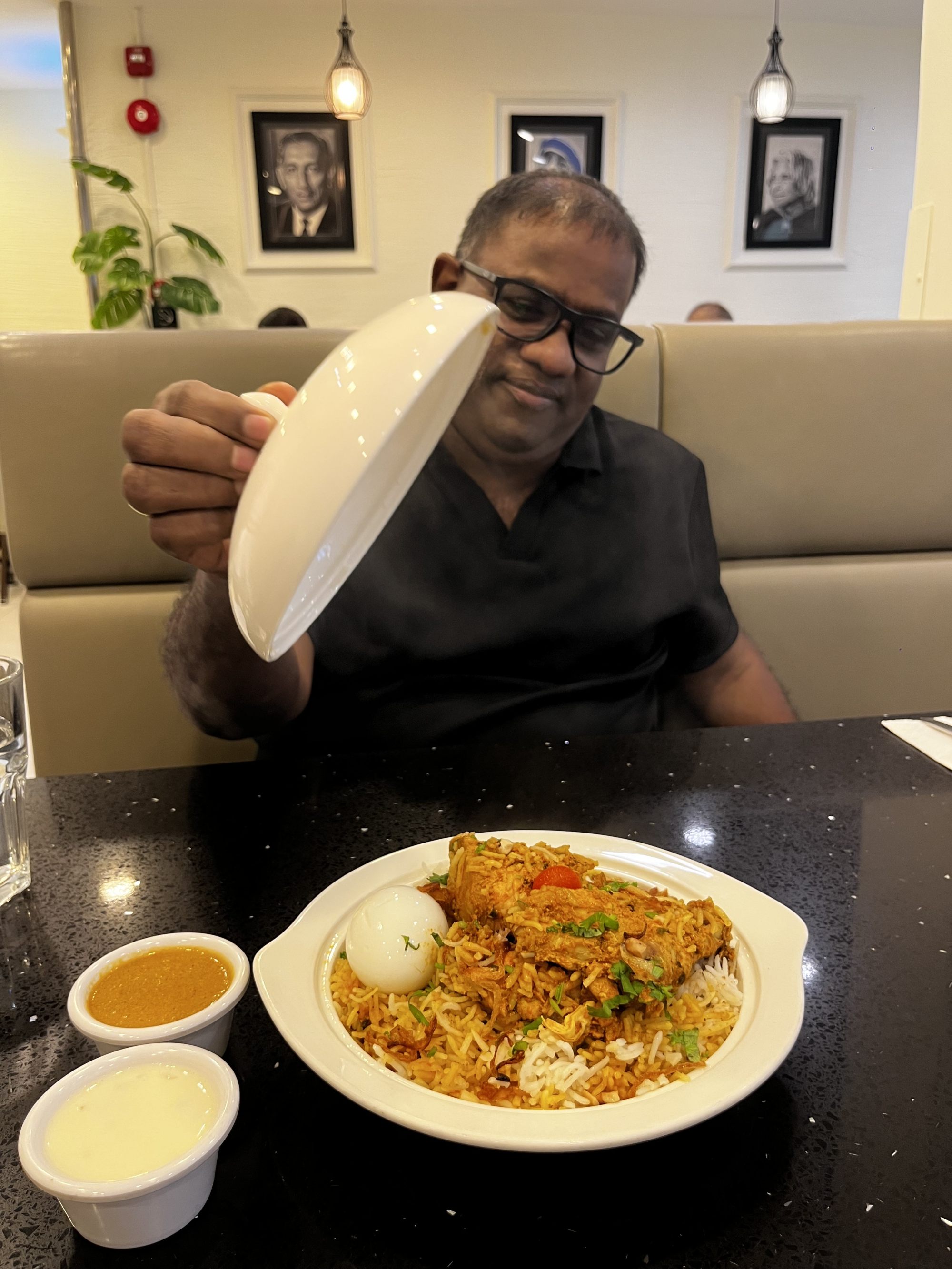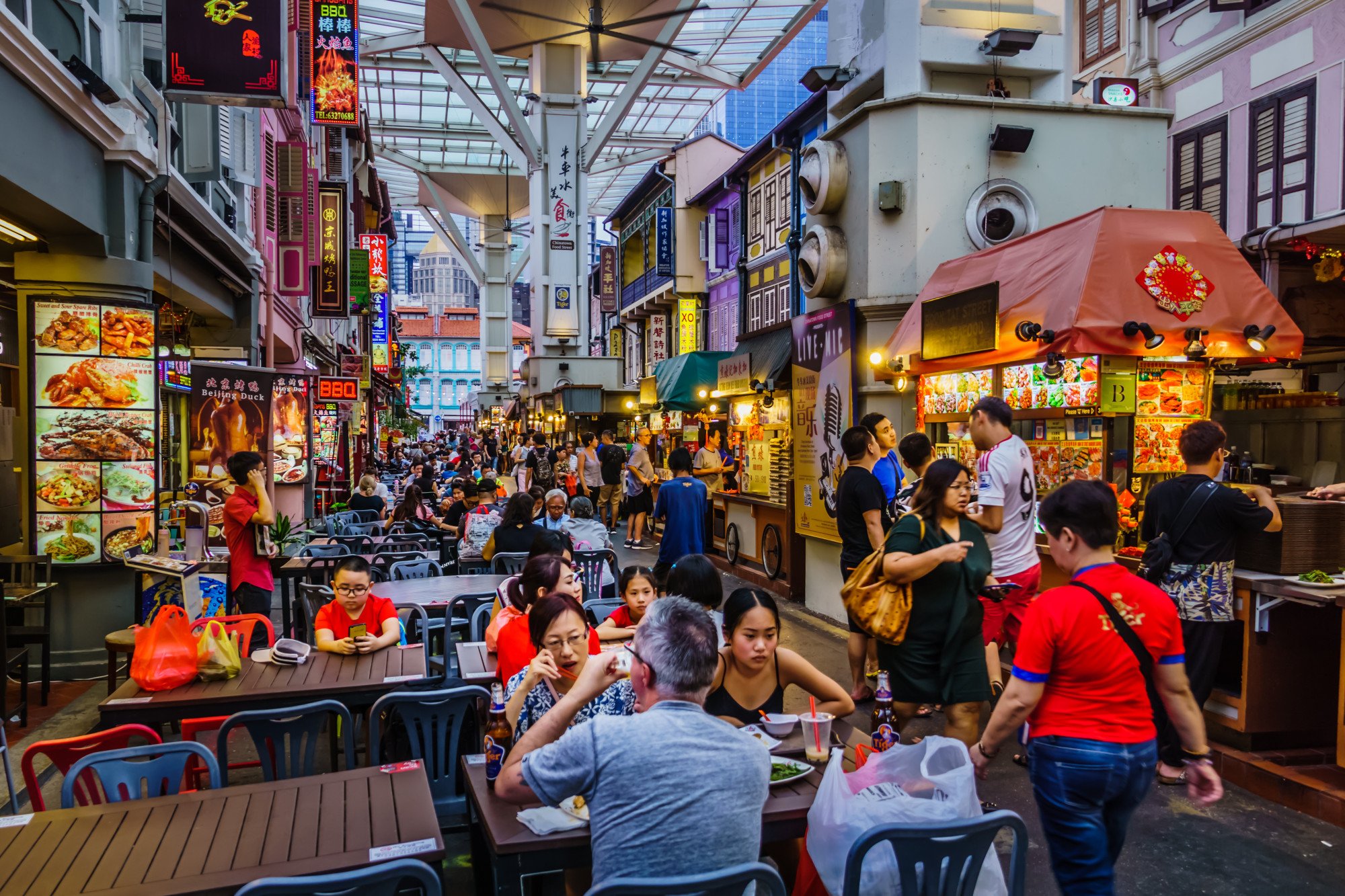Why Singapore restaurateurs are finding an appetite for Malaysia
Malaysia offers a lifeline for Singapore food businesses squeezed by rising costs and shrinking consumer spending, amid high closure rates

In Johor Bahru, under an hour across the border from Singapore, restaurateur Govinda Rajan is eyeing expansion. It has been only three months since he opened his first Malaysian outlet of Mr Biryani, but the veteran chef is already planning his next move.
Back home, however, he paints a far bleaker picture, saying that his Singapore restaurants in Little India and Siglap are struggling to stay afloat amid soaring rents, labour shortages and shrinking consumer spending.
Govinda had launched Mr Biryani in 2018, offering Singaporeans a Hyderabadi version of the beloved rice dish.
“Don’t talk about profit margins any more, surviving is the priority now,” Govinda, 56, told This Week in Asia.
He is not alone. Across Singapore, food and beverage (F&B) businesses are closing at the fastest rate in nearly two decades. A total of 3,047 establishments shut their doors in 2024, the highest figure since 2005’s 3,352 closures.
The first half of the year has seen 1,404 closures, compared to 1,611 in the same period of 2024.
The casualties to date range from beloved neighbourhood fixtures to big-name international chains – among them, Crystal Jade La Mian Xiao Long Bao’s 20-year-old Holland Village branch, the Michelin-starred Poise on Teck Lim Road, and foreign franchises such as Eggslut, Manhattan Fish Market and Burger & Lobster.
While Govinda and other food business owners acknowledge to This Week in Asia that ingredients tend to cost more in Malaysia, they say the higher prices are offset by significantly lower rents and labour costs, making profit margins more viable.
In contrast, Singapore’s tight restrictions on hiring foreign workers – including levies and minimum salary requirements – combined with low local interest in service jobs, have made operations increasingly difficult, they lament.

A recent survey by market research firm YouGov of 4,035 respondents in Singapore has shown that the F&B sector is likely to take the biggest hit in light of changing economic conditions. More than a quarter, or 26 per cent, said they would cut back on dining out, while a fifth indicated spending less on food delivery.
Geoffrey Tai, a manager for Temasek Polytechnic’s Diploma in Culinary and Catering Management course, told This Week in Asia that he had noticed an increase in local operators eyeing regional expansion over the past 12 to 18 months in response to Singapore’s high operating costs. Companies could also be looking to diversify revenue streams and tap into the growing regional middle-class populations, he added.
Unhandled type: inline-plus-widget {“type”:”inline-plus-widget”}
Noting Singapore’s high rent and labour costs, Tai said: “Contrast this with Malaysia, where rental, utilities and manpower are significantly cheaper, and you start to understand the appeal. Of course, pricing power is lower there, but so are the operating costs, so for certain formats, especially casual dining or fast-casual concepts, the numbers can work out more attractively.”
Venturing across the border has certainly worked out for Keith Koh, owner of gastropub Lad & Dad, who opened a Muslim-friendly branch in Kuala Lumpur in May. The lower operating costs there have helped ease some of the pressure off him, he says, and given him a renewed sense of purpose.
“It gives me a breath of fresh air when I go to Malaysia. I have the time, I have the space, I have the community, to be able to remind myself I’m an entrepreneur. In Singapore, sometimes I forget why I’m doing this because I get lost chasing margins due to the high overheads,” said Koh, 35.
“I lost track of the passion, the fire, the adrenaline I was burning out every other year, but going to Malaysia gave me that sense again.”
Even as local restaurateurs move north amid the apparent doom and gloom in the Singapore food scene, more than 3,790 new eateries opened in the city state last year, hoping to try their luck at reversing the situation.
The first half of this year saw 1,964 restaurant openings.
Singaporean chef-owner Bjorn Shen is less optimistic, noting that many of the newcomers are ill-informed and assume they can make 30 per cent profits in the cutthroat industry, which he deems impossible.
“For 5 to 7 per cent profits, you should be thanking your lucky stars and kissing the feet of whoever you worship, because eight out of 10 people are losing money,” said Shen, who is also a consultant for new entrants into the F&B scene.
“We have more restaurants here than we have people to feed.”
Shen recently opened restaurants NEP! in Penang and pizza place Baba G’s in Bali alongside his flagship Middle Eastern-inspired restaurant Artichoke in Singapore.
Profit margins for restaurants that are doing well in Penang and Bali would typically be 20 per cent and 30 per cent respectively, according to Shen. He also pointed out that an entry-level staff member in Indonesia would cost about a fifth of what they would cost in Singapore.
In contrast, most F&B businesses typically do not last more than two years in Singapore, Shen notes, adding that a profitable business may still risk closure if the landlord chooses to increase rent to maximise profits. The argument that businesses should just move is also moot, since most would not have made back their capital and would have to go into further debt to venture into a new space.
Asked if he would ever expand in Singapore, Shen said he was unlikely to open another restaurant here should Artichoke close.

The competition for a shrinking piece of consumer pie in Singapore has also increased with the influx of Chinese players such as Mixue, Hunan cuisine chain Nong Geng Ji and Shu Da Xia Sichuan hotpot restaurant, prompting criticism of the city state’s openness to foreign brands.
Local restaurateurs, however, say these are just market forces they will have to compete with to survive and they have previously faced challenges from Japanese brands.
“A lot of this anger and sentiment directed at the Chinese businesses is a little bit of xenophobia showing,” said Shen, noting that he had no issues with foreign food establishments.
Koh said he viewed the presence of the Chinese brands as a challenge to improve his own management of an F&B business in Singapore.
He is also holding out hopes of expansion in the city state, after his entry into the Malaysian market has allowed him to balance his passion of running an F&B business and the challenge of making ends meet in Singapore.
“To me, I’ll get maximum satisfaction tackling both since it reminds me of the different challenges,” Koh told This Week in Asia. “As an entrepreneur, I don’t shy away from challenges. I’m not going to Malaysia because it’s easier. Malaysia poses a different set of challenges.”
Looking ahead, observers say local F&B businesses will have to adapt to survive by learning best practices from the market leaders.
Tai of Temasek Polytechnic said technology would increasingly play an important role, such as through revenue optimisation, delivery platforms, automation, or data analytics to better understand consumer preferences.
“We’ve seen businesses bounce back from the pandemic, adapt to new trends, and keep pushing the boundaries,” Tai said. “Singaporeans are passionate about food, and if we keep that passion at the core of our businesses, there’s no reason to believe we won’t continue to see innovation and growth.”